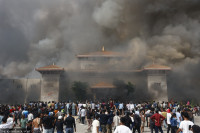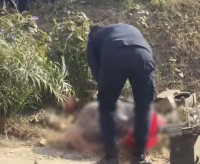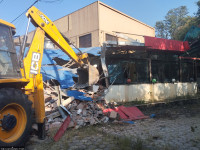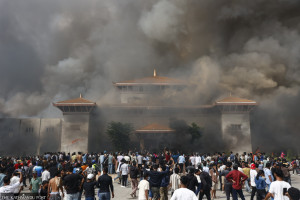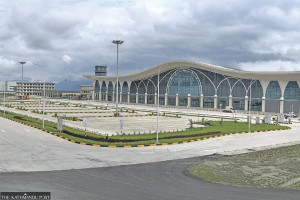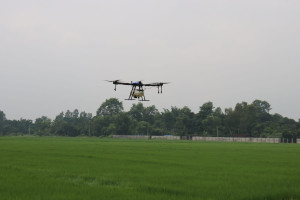Kathmandu
Valley toxic air is choking street dogs, too
Air pollution, seasonal changes increase respiratory, gastrointestinal problems in animals.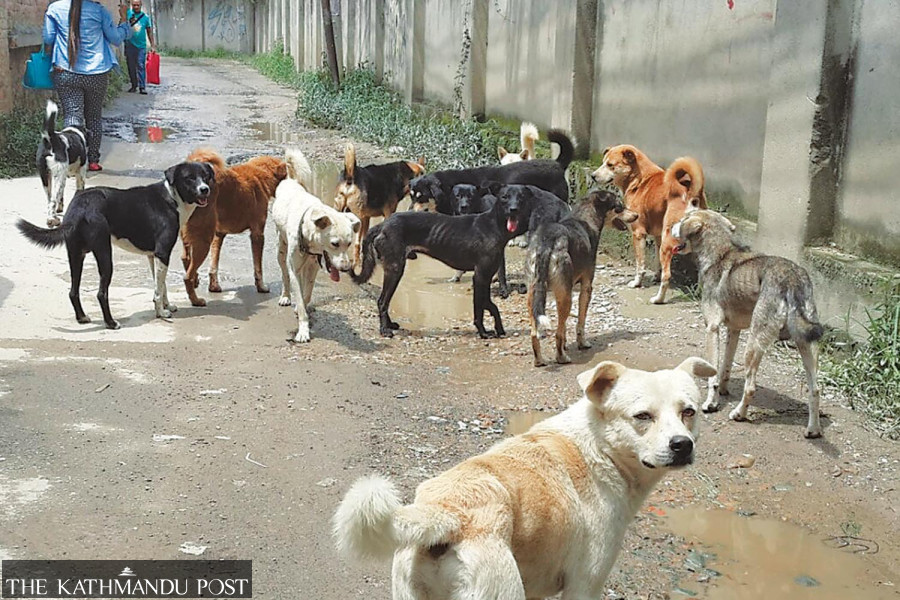
Aarati Ray
Every evening, as she walks home from her German language class in Putalisadak, Sneha Bhattarai carries biscuits in her bag. Her route through Thapathali, past Norvic Hospital and down the Maternity Hospital road to Sankhamul, is familiar, not just to her, but to the 8 to 12 street dogs who await her small treats.
But last Friday, something felt different. The dogs weren’t the same.
“They didn’t run to me like usual,” said Bhattarai. “One of my favourite dogs near Rosebud School was quite aggressive, coughing, sneezing and avoiding the biscuit. It looked like it was struggling to breathe.”
Bhattarai, wearing a mask herself, then thought, it must be the pollution. And as experts would later confirm, her hunch was right.
Kathmandu has been suffocating under a thick cloud of toxic air since last week. The city has almost daily ranked as the world’s most polluted city on IQAir, a Swiss air quality monitoring platform.
The consequences for humans have been widely reported: Red eyes, sore throats, skin flare-ups and headaches. But animals, both pets and strays, are the overlooked victims of this environmental crisis.
Many, like the dogs Bhattarai feeds, are out on the streets all day, exposed to rising pollution with no protection.
“Dogs that were usually excited to see me were suddenly sluggish,” Bhattarai said. “Some had red eyes, some wouldn’t eat. They looked tired, just like how I feel after being out too long these days.”
Veterinary doctor at the Livestock Service Office Lagankhel, Dr Nitesh Karki, confirmed a recent uptick in animal health issues.
“Although we haven’t had an overflow of cases yet, there has been a noticeable increase in the cases which can be linked to the changing season and the hazardous level of pollution,” Karki said. “If the pollution levels and toxic air remain the same, cases will rise further.”
According to Karki, this level of air pollution can lead to or worsen a variety of health problems in canines, such as viral infections like parvo, respiratory troubles, eye infections, digestive issues, diarrhoea, fever, skin conditions, and even tapeworm infestations.
Last year, during a similar spike in pollution levels and seasonal changes, the Livestock Service Office saw a rise in canine cases and viral infections. “While we are only focused on humans, climate change and pollution are taking a toll on animals as well”.
Samir Rai, a Sankhamul resident, noticed the changes caused by pollution firsthand.
“On Thursday, I took Sammy [his dog] out for our usual morning walk. I could feel the air was heavier than usual. By the evening, Sammy kept sneezing,” said Rai. “The next morning, Sammy had a fever”.
According to the information from the livestock service office, 80 percent of the cases seen at government vet hospitals are domestic dogs, since owners bring them in. Stray dogs, when rescued, are usually taken to animal welfare shelters and NGOs.
“As we mostly receive domestic canine cases, we can’t exactly quantify the total impact on street dogs,” said Karki.
Some animal volunteer and welfare organisations have also confirmed problems with street dogs.
Srijana Shrestha, a member of Street Dog Care, said that although extreme cases haven’t exploded, they’re seeing clear signs of trouble.
“Dogs are coughing more. There’s more breathing difficulty and eye infections,” she said.
According to Shrestha, although street animals are used to harsh outdoor conditions and have stronger resistance than their domestic counterparts, the current level of toxic air is unhealthy for them.
Rajan KC, a veterinary technician at Voice of Animal-Nepal, seconded that. “ Issues like sneezing, coughing, breathing difficulties, red eyes, and excess saliva are being seen in this environment.”
The harm isn’t just anecdotal. A pilot study published in March 2024 focused on stray dogs in Kathmandu Valley found signs of pulmonary anthracosis, a condition caused by prolonged exposure to carbon pollutants.
The research analysed 76 stray dogs showing symptoms like rapid breathing (tachypnoea), laboured breathing (dyspnoea), coughing, sneezing, nasal discharge, fever, and loss of appetite (anorexia).
Lung and lymph node samples revealed microscopic changes consistent with damage from toxic air. The samples were a clinical confirmation that Kathmandu’s air is scarring the lungs of dogs alongside those of humans.
The combination of rising temperatures, seasonal changes, and worsening pollution can lead to a greater spread of the Canine Distemper Virus (CDV), says KC.
While pollution doesn’t directly cause distemper, it weakens the immune system, making animals more vulnerable to infections like CDV. “In this polluted environment, especially with the season changing, more animals may show respiratory or gastrointestinal issues which could be signs of CDV,” he said.
Symptoms of CDV include eye and nasal discharge, fever, coughing, lethargy, loss of appetite, vomiting, and diarrhoea.
Experts recommend that pet owners stay vigilant by limiting their pets’ outdoor activities, ensuring they stay well-hydrated, providing clean food and water, watching for signs of respiratory issues, and seeking veterinary care when needed.
“It’s better not to take them out for walks right now. With hazardous pollution, there’s even the danger of new or unidentified diseases. Avoiding outdoor exposure is safer”, added Karki.
Nepal’s government has no formal system to protect street animals from environmental hazards. Shelters try to step in, but resources are limited, says Shrestha.
“The authorities must act swiftly to control this pollution,” said Shrestha. “Not just for us humans, but for the innocent animals breathing the same air.”
Back on the streets of Thapathali, Bhattarai still carries her bag of biscuits.
The usual joy of seeing familiar wagging tails no more available, she now walks a little faster with worry, hoping the dogs she knows, and the many street animals she doesn’t, will make it through.
“I wish I could do more,” Bhattarai said. “They’re paying the price just like us, maybe even more, and through no fault of their own.”




 16.12°C Kathmandu
16.12°C Kathmandu
